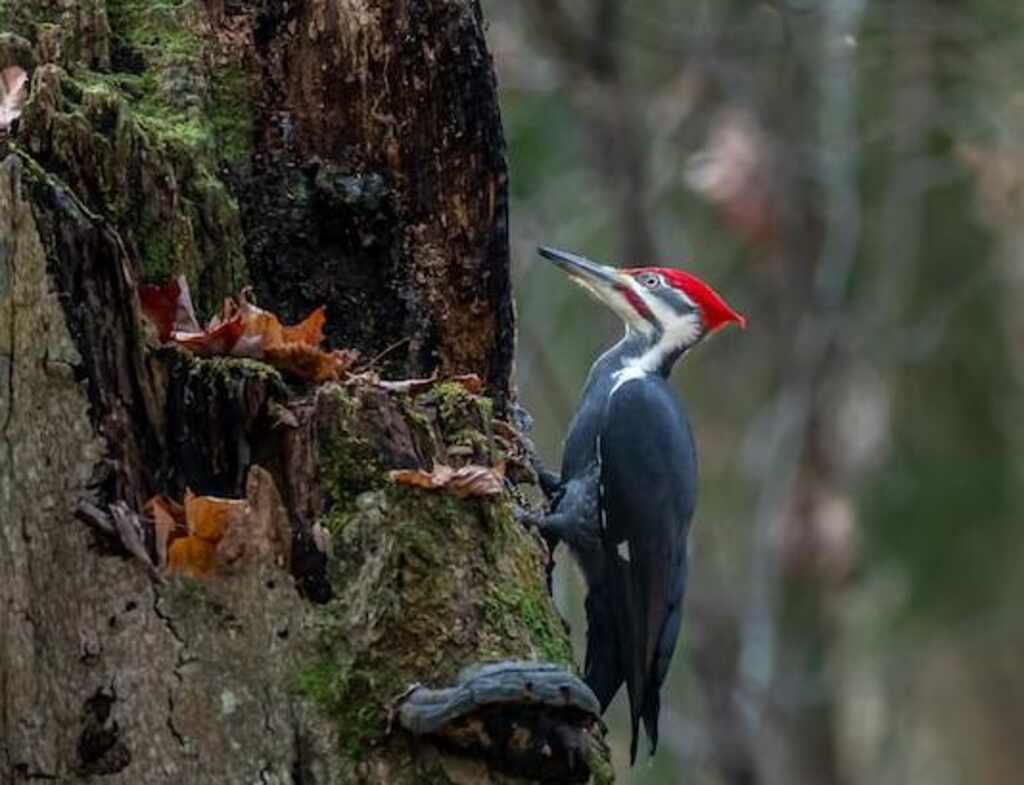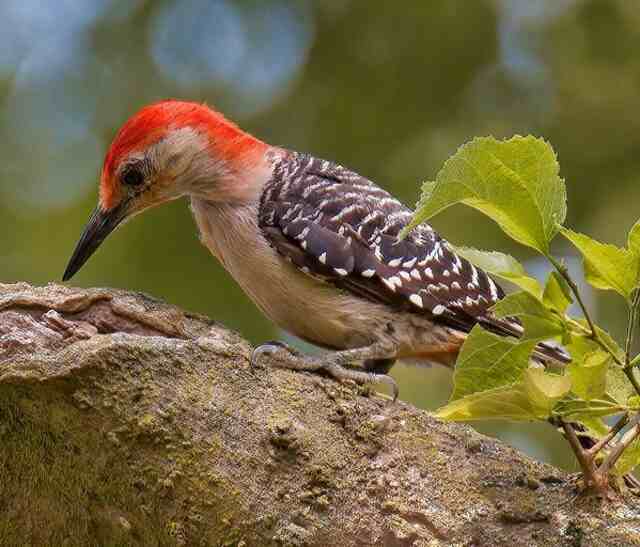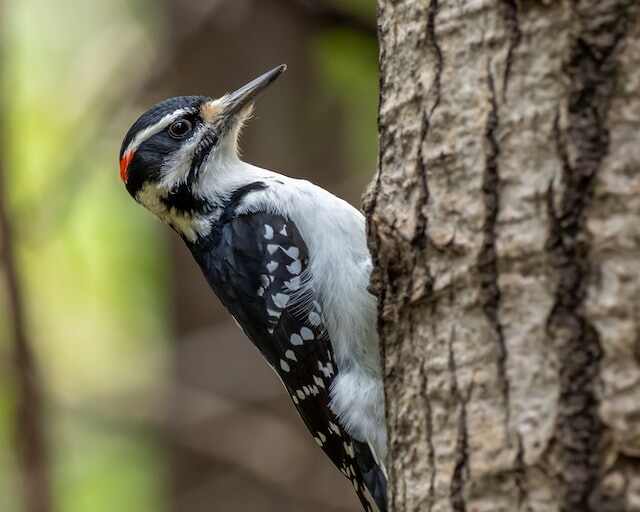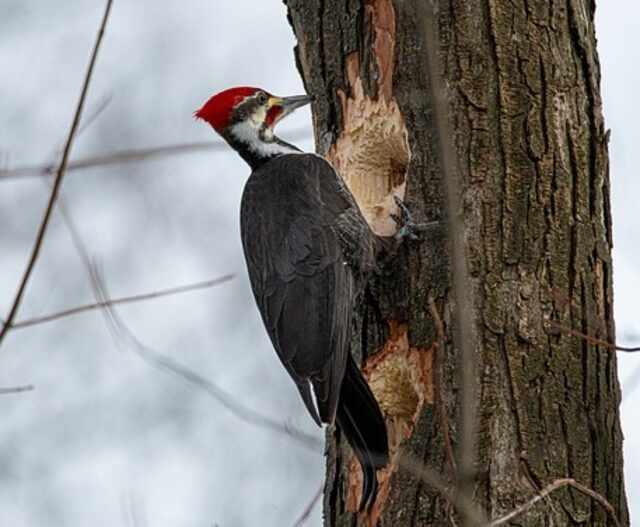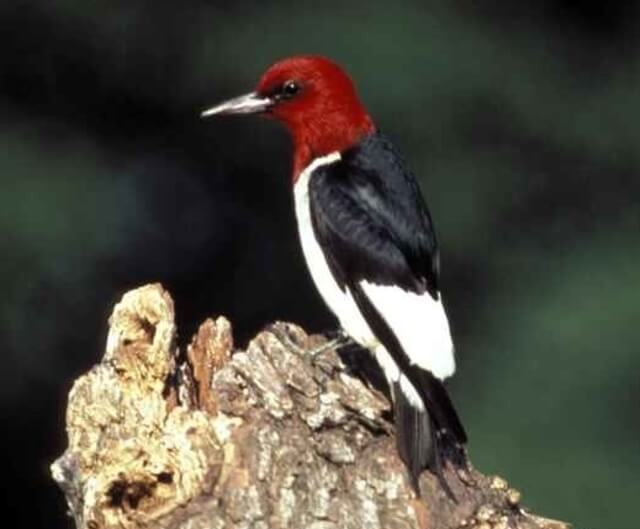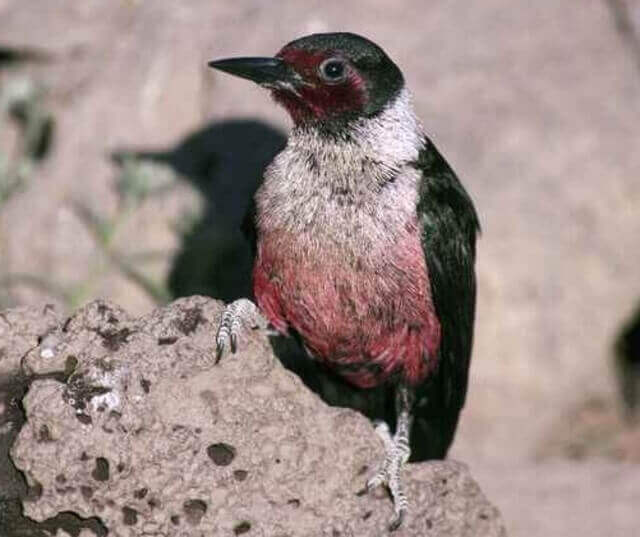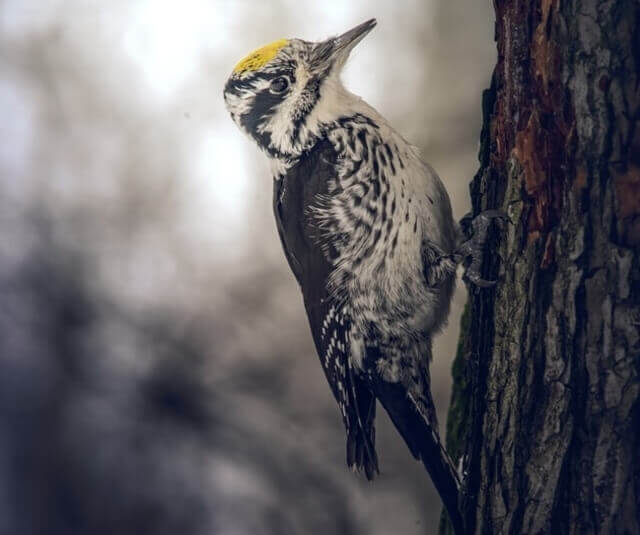Welcome to our ultimate guide to woodpeckers in Massachusetts! Whether you’re captivated by the tiny yet iconic Downy Woodpecker or the impressive Pileated Woodpecker, Massachusetts boasts a rich variety of woodpecker species that bring its forests to life.
In this detailed guide, we’ll explore the distinct traits, habitats, and behaviors of these fascinating birds, providing nature lovers and birdwatchers with all the insights needed to identify and appreciate these feathered wonders.
Click the Play button below to listen to our podcast:
Table of Contents
Types of Woodpeckers in Massachusetts
Downy Woodpecker
- Length: 5.5-6.7 in (14-17 cm)
- Weight: 0.7-1.0 oz. (21-28 g)
- Wingspan: 9.8-11.8 in (25-30 cm)
- Scientific Name: Picoides pubescens
- Frequency of Occurrence: 34.12% (Statistic by: eBird)
- Maps: Range Map – Sightings Map
- Sounds: Calls and songs
- Where To Find Them: Downy woodpeckers are a common sight in Massachusetts, with popular spots including the Berkshire Mountains and the Nashua River Valley.
Description: The Downy Woodpecker (Dryobates pubescens) is a small woodpecker native to North America and a common backyard visitor. Their habitat includes deciduous forests, open woodlands, orchards and parks across much of the continental U.S. They have also been seen in parts of Canada and Mexico.
Downy Woodpeckers feed on insects like ants, beetles, caterpillars and other invertebrates that they find in trees as well as on suet feeders. They often store extra food for later consumption by wedging it into cracks or crevices in tree bark. These birds are particularly fond of suet – so if you want to attract them to your yard, make sure to put up a suet feeder!
Downy Woodpeckers nest in cavities excavated from dead trees or branches with their strong beaks, usually laying eggs between April and June. A few tips to attract these birds include: offering suet, setting up nesting boxes near trees, providing water sources nearby, and planting bird-friendly plants such as berry bushes or fruiting shrubs around your yard.
Read more: How to Attract Downy Woodpeckers to Your Yard? (Easy!)
Red-bellied Woodpecker
- Length: 9.5 in (24 cm)
- Weight: 2.0-3.2 oz. (56-90 g)
- Wingspan: 13.0-16.5 in (33-42 cm)
- Scientific Name: Melanerpes carolinus
- Frequency of Occurrence: 21.70%
- Maps: Range Map – Sightings Map
- Sounds: Calls and songs
- Where To Find Them: Red-bellied Woodpecker populations are common in Massachusetts, and there are several popular spots where they can be seen. One of the best places to see them is in Wachusett National Forest, where they live in a variety of habitats, including mixed hardwood and conifer forests.
Description: The Red-bellied Woodpecker is a species of woodpecker that is native to the eastern United States and parts of the Midwest. It can be found in deciduous and mixed forests, open woodlands, urban parks, and residential neighborhoods.
Its diet consists mainly of insects, fruits and nuts. When it comes to nesting, they typically select dead trees or snags located close to water sources. To attract them to your yard, you can install bird feeders filled with suet as well as set up nesting boxes or natural cavities.
Additionally, adding large branches and logs to your landscape can provide ideal places for this beautiful bird to perch while searching for food and looking for potential mates!
Read more: How to Attract Red-bellied Woodpeckers to your Yard?
Hairy Woodpecker
- Length: 7.1-10.2 in (18-26 cm)
- Weight: 1.4-3.4 oz. (40-95 g)
- Wingspan: 13.0-16.1 in (33-41 cm)
- Scientific Name: Picoides villosus
- Frequency of Occurrence: 10.86%
- Maps: Range Map – Sightings Map
- Sounds: Calls and songs
- Where To Find Them: The Hairy Woodpecker is a popular bird to see in Massachusetts. These large woodpeckers can be found in many popular spots around the state, such as the White Mountains and Boston Common.
Description: The Hairy Woodpecker is widely distributed in the northern parts of North America. They can be found in mature coniferous and deciduous forests, woodlots, wetland habitats, riparian areas near rivers or streams, and backyards with trees. The male has a black-on-white pattern on their back and wings with a red crown, while females look identical but lack the red crown.
These woodpeckers mainly feed on insects such as ants, caterpillars, beetles, moths and wasps which they locate by tapping and listening for the vibrations coming from inside dead or dying tree trunks. For nesting purposes, they dig out cavities in both live and dead trees.
To attract these birds to your yard, you can provide them with suet cakes or other high energy bird foods like peanuts or sunflower seeds as an added incentive during cold winter months when food sources may be hard to come by. Additionally, providing water either via a shallow dish or bird bath would be beneficial year round, as well as some natural nesting materials such as wood chips and pine needles around the base of shrubs and trees.
Pileated Woodpecker
- Length: 15.8-19.3 in (40-49 cm)
- Weight: 8.8-12.3 oz. (250-350 g)
- Wingspan: 26.0-29.5 in (66-75 cm)
- Scientific Name: Dryocopus pileatus
- Frequency of Occurrence: 3.34 %
- Maps: Range Map – Sightings Map
- Sounds: Calls and songs
- Where To Find Them: These birds are popular to see in Massachusetts, as they can be found in many popular areas, such as the forests near Boston and the Berkshire Mountains.
Description: The Pileated Woodpecker is a large, striking bird that can be found in both deciduous and coniferous forests throughout much of North America. This species has an expansive distribution range, stretching from Alaska to the east coast of the United States and Mexico. Their primary habitat consists mainly of mature, densely wooded forest stands with large trees, snags, and dead wood.
Pileated Woodpeckers feed primarily on wood-boring beetle larvae, but they also eat other insects, nuts, fruits, and berries. They nest in cavities excavated by their strong beaks into living or dead trees or logs. If you want to attract Pileated Woodpeckers to your backyard, one of the best things to do is create a variety of habitats that provide food sources and suitable nesting sites for them.
Planting native hardwood trees such as oaks and hickories will help create inviting foraging opportunities for these birds. Additionally, leaving some standing dead trees (snags) in your yard will provide ideal nesting opportunities for Pileated Woodpeckers. Finally, putting up a suet feeder with high-fat peanut butter suet will give them an additional incentive to visit your backyard!
Read more: How to Attract Pileated Woodpeckers to your Yard (Fast)
Red-headed Woodpecker
- Length: 7.5-9.1 in (19-23 cm)
- Weight: 2.0-3.2 oz. (56-91 g)
- Wingspan: 16.5 in (42 cm)
- Scientific Name: Melanerpes erythrocephalus
- Frequency of Occurrence: 0.1333%
- Maps: Range Map – Sightings Map
- Sounds: Calls and songs
- Where To Find Them: The red-headed woodpecker is one of the most popular birds in Massachusetts. They can be found in many areas, but some popular spots include the Blue Hills and the Berkshire Mountains. While they are not as rare as some other birds, they are still a very special sight to see.
Description: The Red-headed Woodpecker is a beautiful, small bird native to North America. It has a distinct red head and black and white body. These birds can be found in open woodlands, parks, and urban areas throughout their range, which includes the eastern United States and southern Canada.
They primarily eat insects such as beetles, grubs and caterpillars. During nesting season they also feed on seeds, fruit, nuts, and suet at backyard bird feeders. To attract Red-headed Woodpeckers to your yard, provide an array of food sources that are specific to this species’ needs.
Suitable nest boxes or cavities should also be provided along with some dead trees or branches for them to cling onto while feeding. Providing water from bird baths or shallow dishes is also beneficial for these birds, as well as other avian species that might visit for food options in your yard.
Read more: Interesting Red-Headed Woodpecker Facts (Explained)
Black-backed Woodpecker
- Length: 9.1 in (23 cm)
- Weight: 2.1-3.1 oz. (61-88 g)
- Wingspan: 15.8-16.5 in (40-42 cm)
- Scientific Name: Picoides arcticus)
- Frequency of Occurrence: 0.0081%
- Maps: Range Map – Sightings Map
- Sounds: Calls and songs
- Where To Find Them: The Black-backed Woodpecker is a bird that can be found in a number of places in Massachusetts. Popular spots for them to be seen include the Wachusett Mountain State Forest, the Berkshire Mountains, and the Mount Tom Range. They are very rare birds and can only be found in a small area of New Hampshire.
Description: The Black-backed Woodpecker (Picoides arcticus) is a species of woodpecker native to North America. This woodpecker has a distribution spanning from Alaska and northern Canada all the way to Mexico. These birds prefer coniferous forests including spruce and pine trees, but can also inhabit more open woodland structures such as deciduous forests or parklands. Their diet consists mostly of insects, including beetle larvae, ants, wasps, flies and caterpillars, which they locate by listening for them beneath the bark of trees.
When it comes to nesting habits, they tend to use abandoned woodpecker cavities or abandoned nest holes made by other animals like red squirrels or flying squirrels; however, they will also excavate their own cavities if necessary. To attract these birds, in your yard you should create a habitat that mimics their natural environment with tall conifer trees and plenty of insect sources available as food.
You can add bird feeders filled with suet and dried fruit or nut mixtures specifically tailored for woodpeckers. Providing nesting cavities in the form of pre-made wooden boxes placed on the trunks of big trees will also help encourage these birds to move into your area, since they do not typically excavate their own nests. Finally, some water sources like a bird bath or fountain may be beneficial in bringing an array of avian life into your backyard!
Lewis’s Woodpecker
- Length: 10.2-11.0 in (26-28 cm)
- Weight: 3.1-4.9 oz. (88-138 g)
- Wingspan: 19.3-20.5 in (49-52 cm)
- Scientific Name: Melanerpes lewis
- Frequency of Occurrence: 0.0001%
- Maps: Range Map – Sightings Map
- Sounds: Calls and songs
- Where To Find Them: The Lewis’s Woodpecker is a very rare bird found in only a few locations in Massachusetts. These areas include the Berkshire Mountains, the White Mountains, and the North Shore. Anyone who is interested in seeing this unusual bird should check out these specific places.
Description: The Lewis’s Woodpecker has a wide distribution range, from central Alaska and British Columbia south to Central California and east across much of the western United States, with smaller populations in some mountain ranges. They prefer open habitats such as ponderosa pine forest, savanna, agricultural fields, orchards and riparian woodlands.
Their foods are mostly insects found on trees and logs, along with some nuts like acorns and other plant matter. They use cavities in dead trees for nesting, though sometimes they will nest in metal utility poles! To attract them to your yard, you can provide a suet feeder that contains insects or fruit such as apples and pears throughout the year.
You can also put up a nesting box suitable for the size of this bird species. Adding native vegetation that provides food sources is another way to attract them.
American Three-toad Woodpecker
- Length: 8.3-9.1 in (21-23 cm)
- Weight: 1.6-2.4 oz. (44.8-67.9 g)
- Wingspan: 14.6-15.3 in (37-39 cm)
- Scientific Name: Picoides dorsalis
- Frequency of Occurrence: 0.0001%
- Maps: Range Map – Sightings Map
- Sounds: Calls and songs
- Where To Find Them: The American Three-toad Woodpecker is a very rare bird that can be seen in some popular spots in Massachusetts. These include the Pioneer Valley and the Berkshires, both of which have dense woodlands full of trees where this bird can be seen. It is also common to see these birds near ponds and streams.
Description: The American Three-toed Woodpecker (Picoides dorsalis) is a species of woodpecker that can be found in the eastern United States and most of Canada. As its name implies, it has three toes instead of four like other woodpeckers. This species has a wide distribution range and is found in coniferous forests as well as deciduous forest stands and even urban areas.
The American Three-toed Woodpecker feeds mainly on insects, larvae, acorns, nuts, berries and sap from trees. It nests in cavities excavated by both sexes, with the male usually doing most of the digging. To attract this species to your yard, you should provide plenty of deadwood or standing dead trees for them to feed on.
You can also put up nest boxes with appropriate dimensions tailored to suit the size and shape of the American Three-toad Woodpecker. Putting out suet feeders may also help attract them to your yard if there are no other sources of food available nearby. Lastly, providing water sources such as bird baths or shallow dishes filled with water will entice these birds to visit your backyard more frequently!
Related Post:

